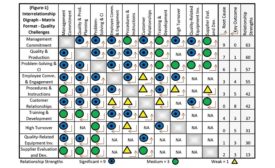Management
Quality’s 19th Annual Spending Survey takes a closer look at what quality professionals will be buying this year.
The spending season begins.
January 8, 2019
Automating Quality in Manufacturing
Automating quality in manufacturing is rarely a one-size-fits-all decision.
January 1, 2019
Quality Headline
Three Material Sciences Corporation Facilities Earn International Quality Recognition
December 24, 2018
Policies Drive Quality Procedures
Understanding the use and limits of both goes a long way.
December 15, 2018
Critical Challenges faced by Quality Departments and Recommended Actions
Each organization’s challenges may stack up differently based on considerations like industry sector, product/service type, customer base and culture.
December 15, 2018
Stay in the know with Quality’s comprehensive coverage of
the manufacturing and metrology industries.
eNewsletter | Website | eMagazine
JOIN TODAY!Copyright ©2024. All Rights Reserved BNP Media.
Design, CMS, Hosting & Web Development :: ePublishing











